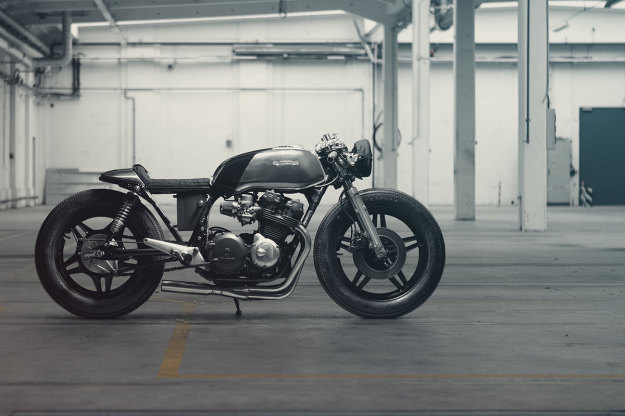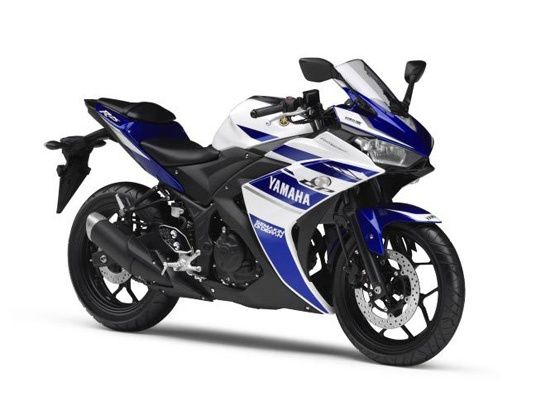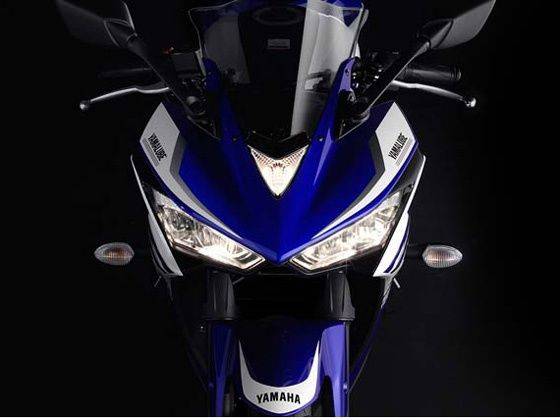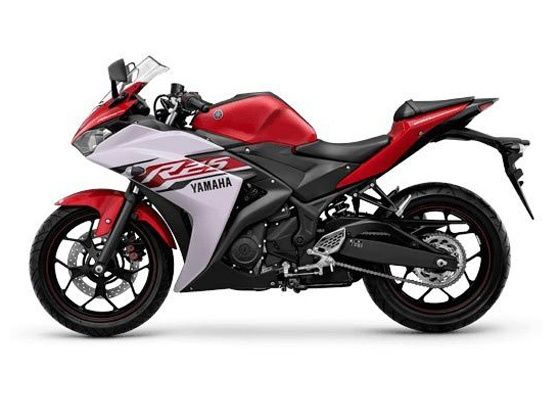Playing Hookie: Nico Mueller’s killer CB750

It takes more than a run-of-the-mill Honda CB750 to get our attention these days, but this low-slung speziall from Germany is very special indeed. The stance is spot on, the lines flow with purpose, and the finish is stark and beautiful.
It’s the sixth build from Dresden-based Hookie Co., the workshop run by 26-year-old designer Nico Mueller. Nico is not the most prolific of builders—he averages one bike a year—but he’d rather do it right than do it fast.

He didn’t hang around when he saw this CB750 donor bike, though. It’s the sturdy DOHC KZ model that pushes out a solid 77 hp—largely thanks to a rack of Keihin carbs, one feeding each cylinder.
“The CB was in great condition, so we didn’t hesitate for a minute,” Nico says. Then ideas started to form. “We envisioned it being long, flat and aggressive. We took the classic creative approach, and started to draw moodboards.”

After several mockups to get the proportions of Hookie #6 just right, Nico and crew took the CB750 apart. They detabbed and cleaned up the frame, positioning the mockups and taking measurements. The frame was treated to a coat of gloss black paint—along with the motor, the wheels and smaller pieces of hardware.
Other parts were brushed, cleaned and reworked rather than painted. “To avoid losing the character of the bike, we mostly use original parts,” says Nico. “Only the handlebars, the light brackets and shock absorbers are completely new.”

The forks have been overhauled and lowered by seven centimeters. The exhaust headers look stock, but are tucked closer to the engine; they now terminate as a 4-into-1 unit fitted with a Harley-Davidson muffler. The tires are beefy Firestone Champion Deluxes, 4.00-19 at the front and 4.50-18 at the back.
The KZ model tank, which often looks so awkward with the droop at the rear, now looks just perfect—helped by the polished steel finish and the diagonal paint stripe.

The seat cowl is hand-made from two-millimeter steel, and it required three attempts before Nico was happy with the result. “Without having an English wheel to help form the curves, it took a lot of time and sweat.”
Flushed into the back is an unobtrusive LED stripe acting as a stoplight. Even less obvious is the full array of Motogadget kit—including an m-Unit V.2 to replace the fuse box, m-Switch pushbutton controls, and m-Blaze bar end turn signals. There’s an RFID ignition lock too.

Co-conspirator Johann Ruttloff made the seat using brown leather and black 14oz denim, giving it three layers of waxing for weather resistance. At the back of the seat is a little box to store a phone or mini-tools.
The headlight cap is also crafted from leather and denim, and inspired by vintage Zündapps and military BMWs.

It’s a textbook example of a modern-day Honda CB750 custom. And, funnily enough, there soon will be a book that documents the build.
Keep an eye out for it in the Hookie Co. webshop from next month.





